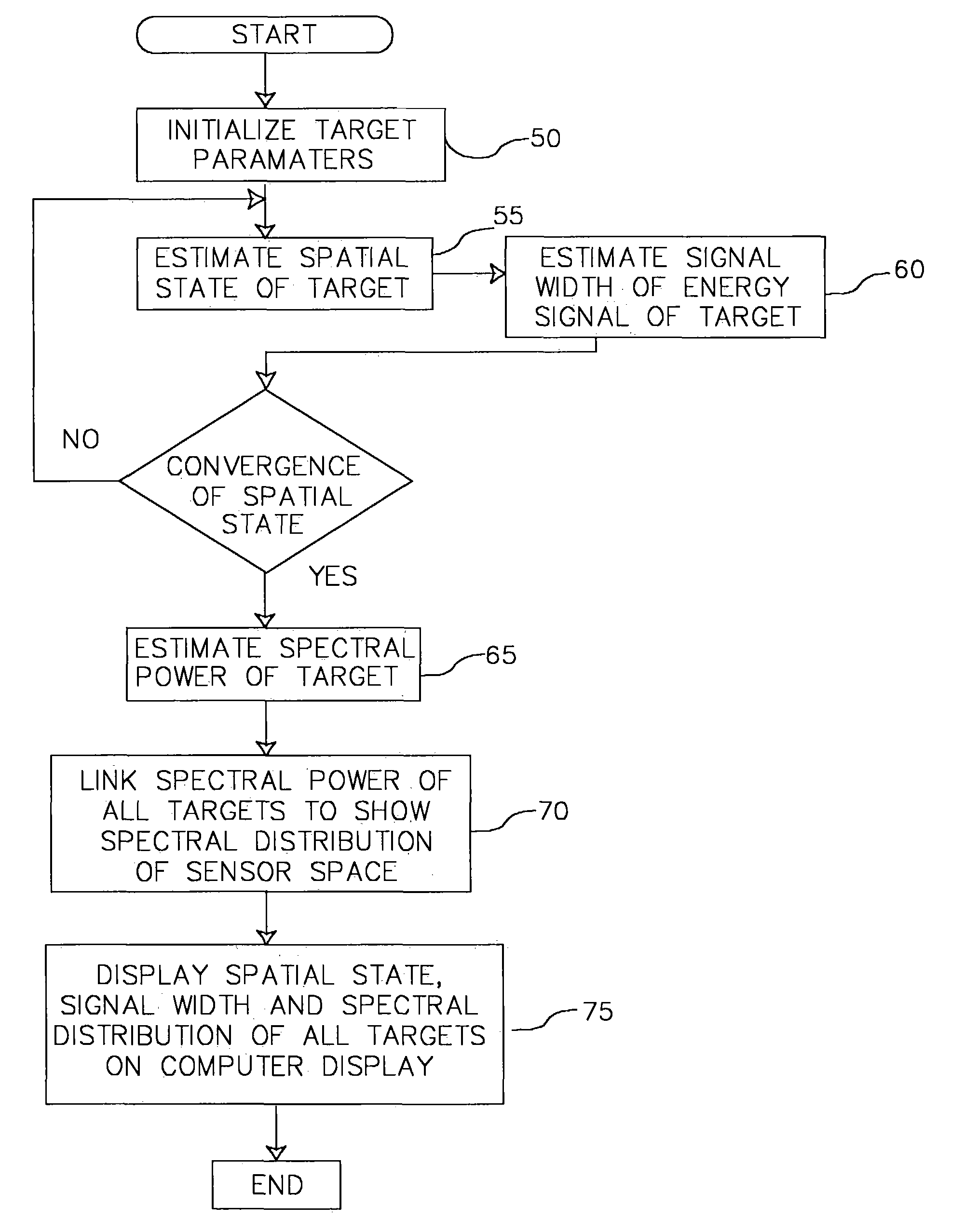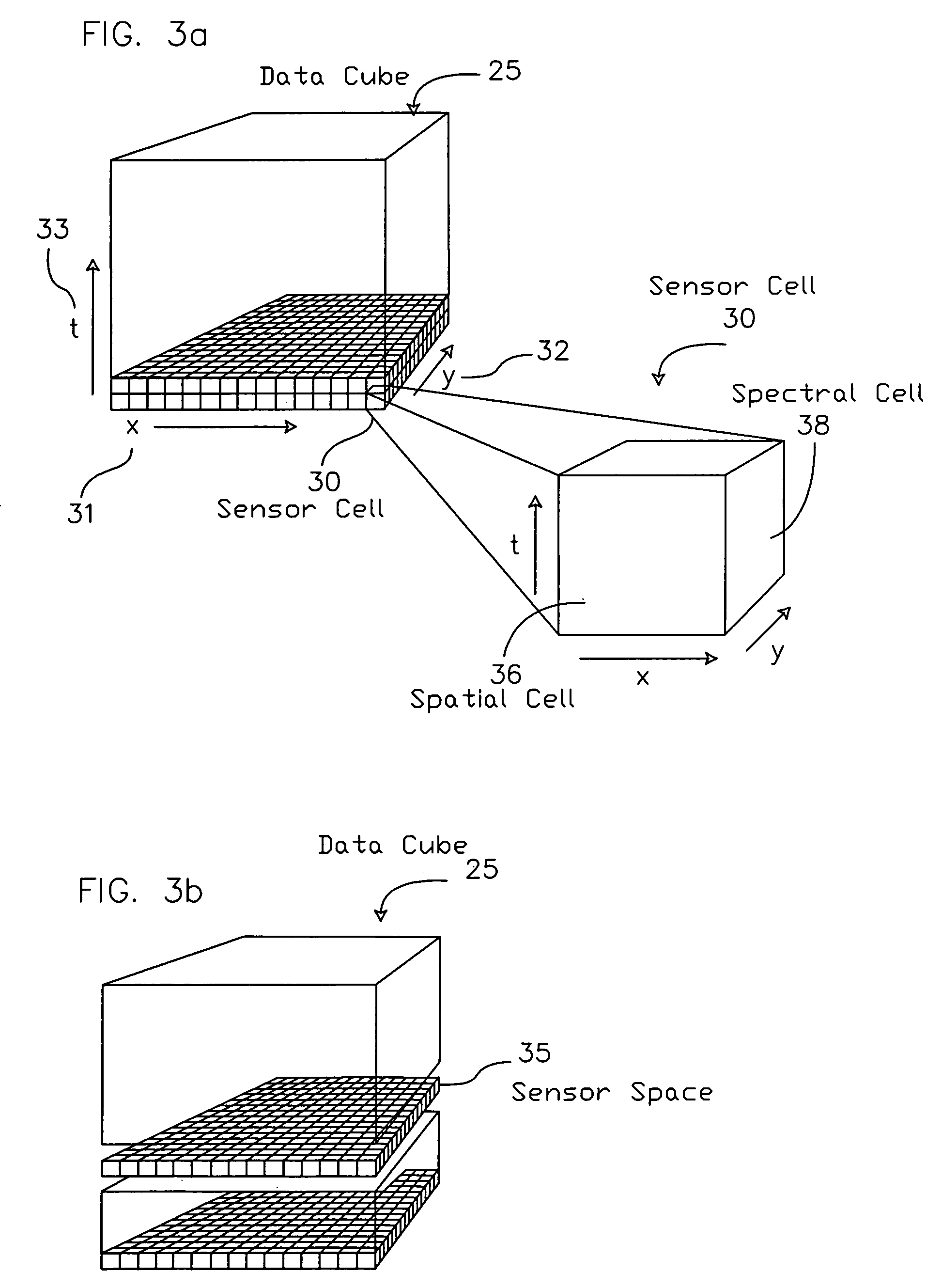Method for tracking targets with hyper-spectral data
a hyper-spectral data and target technology, applied in the field of remote sensing and remote imaging, can solve the problems of gap and delay in tracking information, the inability to distinguish the energy between the two targets, and the limitations of the h-pmht algorithm, and achieve the effect of improving the low signal-to-noise ratio (snr) tracking
- Summary
- Abstract
- Description
- Claims
- Application Information
AI Technical Summary
Benefits of technology
Problems solved by technology
Method used
Image
Examples
Embodiment Construction
[0019]Referring now to FIG. 1 there is shown an underwater vehicle 10 towing an array of sensors 15 arranged on a cable 20. The sensors 15 are of a type known by those skilled in the art of signal processing such as hydrophones. The sensors 15 are capable of detecting energy signals and their intensities from different directions as illustrated in FIG. 2, which shows two vessels labeled k1 and k2 and the energy signals 17 emanating from the vessels. The sensor data from each sensor 15 is transmitted along cable 20 to data processors (not shown) within underwater vehicle 10. The data processors take the raw sensor data and create a data cube 25 as illustrated in FIG. 3. Each such data cube 25 is a collection of smaller cubes referred to as sensor cells 30 which correspond to the processed sensor data generated by the sensors 15. Each sensor cell 30 contains spatial measurements along the x-axis 31, spectral measurements along the y-axis 32 and time measurements along the t-axis 33. T...
PUM
 Login to View More
Login to View More Abstract
Description
Claims
Application Information
 Login to View More
Login to View More - R&D
- Intellectual Property
- Life Sciences
- Materials
- Tech Scout
- Unparalleled Data Quality
- Higher Quality Content
- 60% Fewer Hallucinations
Browse by: Latest US Patents, China's latest patents, Technical Efficacy Thesaurus, Application Domain, Technology Topic, Popular Technical Reports.
© 2025 PatSnap. All rights reserved.Legal|Privacy policy|Modern Slavery Act Transparency Statement|Sitemap|About US| Contact US: help@patsnap.com



